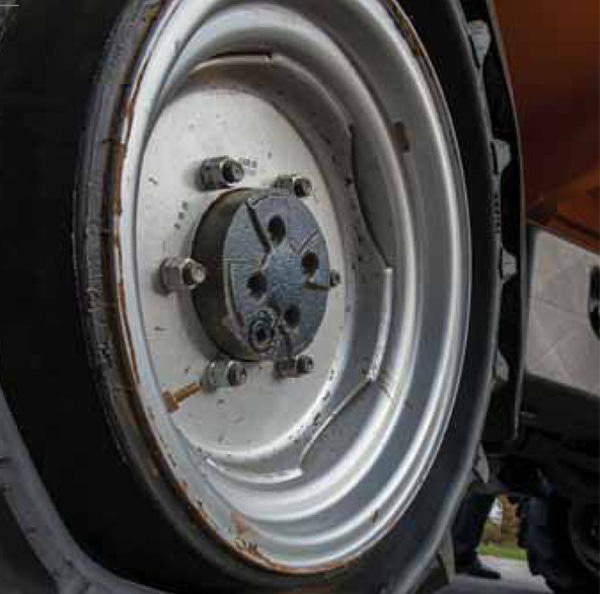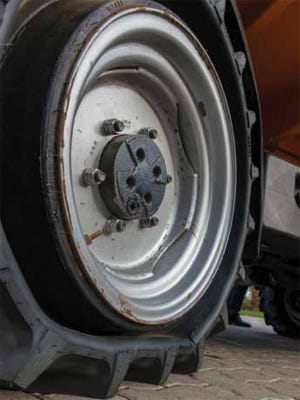December 20, 2013

What more can you do with a farm tire that hasn't already been done? It's a question that many pose as farmers work to make the most from the technology available to get improved traction and performance. The folks at Mitas Tires could change your perspective on that as they work to develop a tire technology developed by a small Israeli startup called Galileo Wheel Ltd.
Avishay Novoplanski, a cofounder and Chief Technology Officer, for Galileo Wheel was on hand at Agritechnica to talk about the PneuTrac tire, and answer some concerns raised by observers of this unique tire design.
The tire has an "inverted" sidewall design that creates a kind of run-flat look that lengthens the tire's footprint and improves traction. "We were looking at ways to combine the track and the wheel into a single unit," he explains.
In fact, Galileo Wheel did develop technology that turns a wheel into a track and back, which would provide tractors with great traction going straight, and improved performance on turns. However, it turns out the complexity of the track-to-wheel design was too expensive to develop. "When we discovered what we needed was a tire solution rather than a track solution we wanted to partner with a tire company to develop this technology," Novoplanski says.
Questions answered

The sidewall is inverted in the PneuTrac which gives the tire a kind of "track" look. It also runs with a longer footprint, which appears to increase traction.
First thought an observer would have is that a tire with an inverted sidewall would have less stability on turns and create a greater risk of detaching from the rim. In fact, Novoplanski demonstrated that tire makers can create as strong and as stiff a sidewall as needed which creates better performance. "We have shown that a radial tire is more likely to come off the rim than our design," he says.
And the design also allows the machine to run with little to no air in the tire. During a demonstration off site in Germany, Mitas showed that a truck mounted with the 18-inch prototype of the tire could run just fine when all the air was let out of the tire.
"We can make the sidewall as strong as we want and still get the longer footprint and lower compaction," Novoplanski says. "With a radial you are limited in how much flex you can provide."
And there's a concern that conventional tires with wider sidewalls are more prone to serious injury. You can patch a flat on the tread, but bust through the sidewall and you're buying a new tire.
Not ready for prime time
In a demonstration of traction and performance, the PneuTrac appears to offer improved traction and less slip versus conventional tires. The demonstration was with 18-inch rims on a truck. Mitas has just constructed a larger farm tire that will start undergoing tests soon. "We are working on the right construction of the sidewall," Novoplanski says.
The move by Mitas to promote the tire early is aimed at showing the market the company is willing to bring new tech to the industry and they're a serious player in the farm tire market. The company's Charles City, Iowa, plant is already up and running and they are growing market share in the U.S. Mitas did purchase the Continental farm tire line, but that name will go away soon to be replaced by Mitas.
As for PneuTrac, the testing will continue. This is an interesting tire to watch in action, and its run-flat potential allows farmers to 'limp home' if there is a failure. As development continues, we'll keep you posted.
Like what you’re reading? Subscribe to Farm Industry News Now e-newsletter to get the latest news and more straight to your inbox twice weekly.
About the Author(s)
You May Also Like






